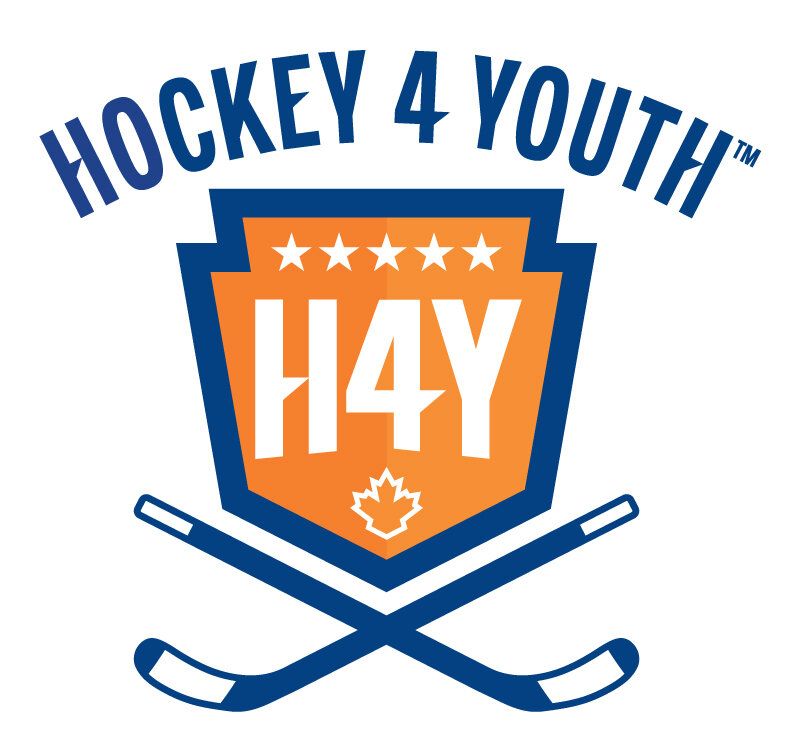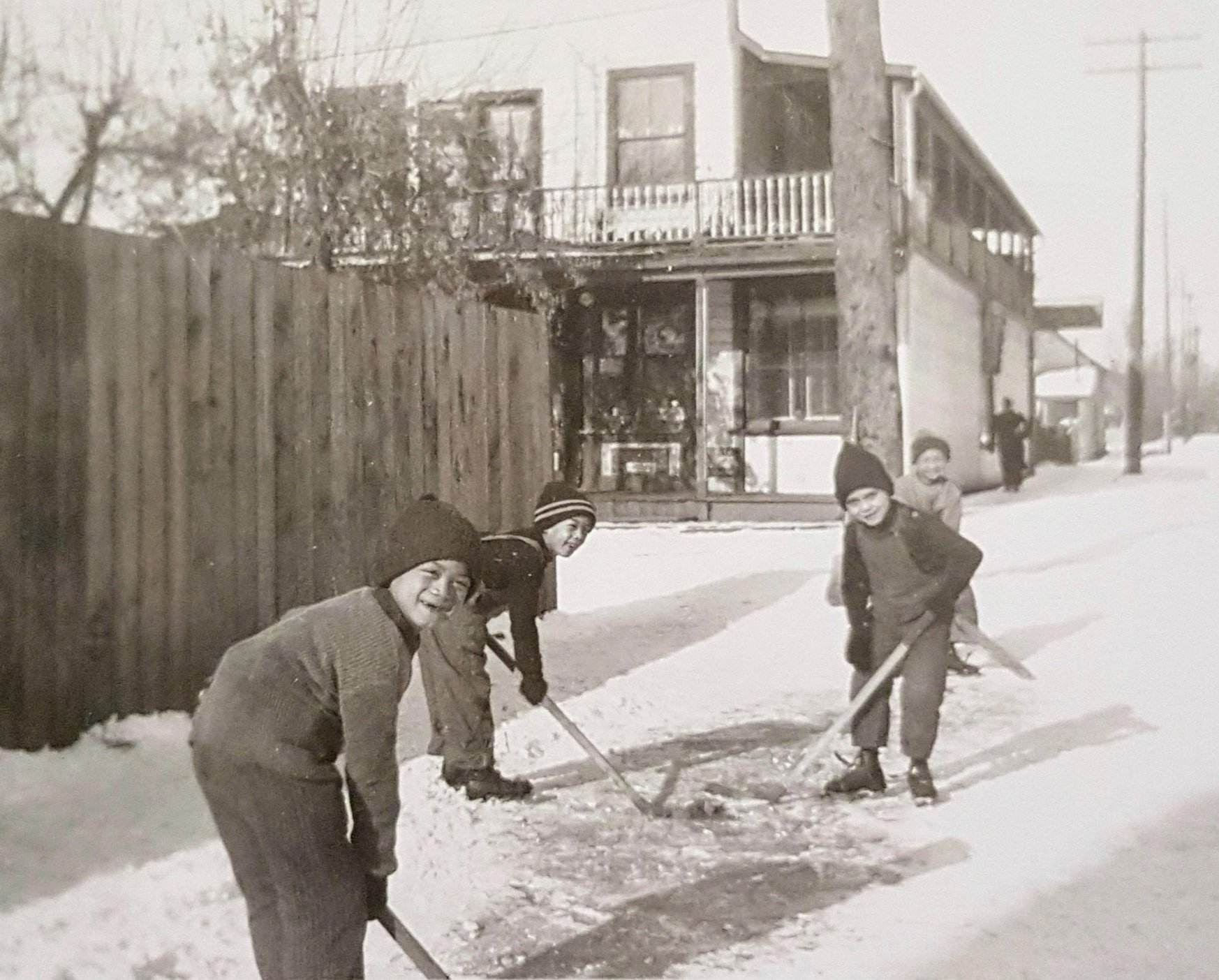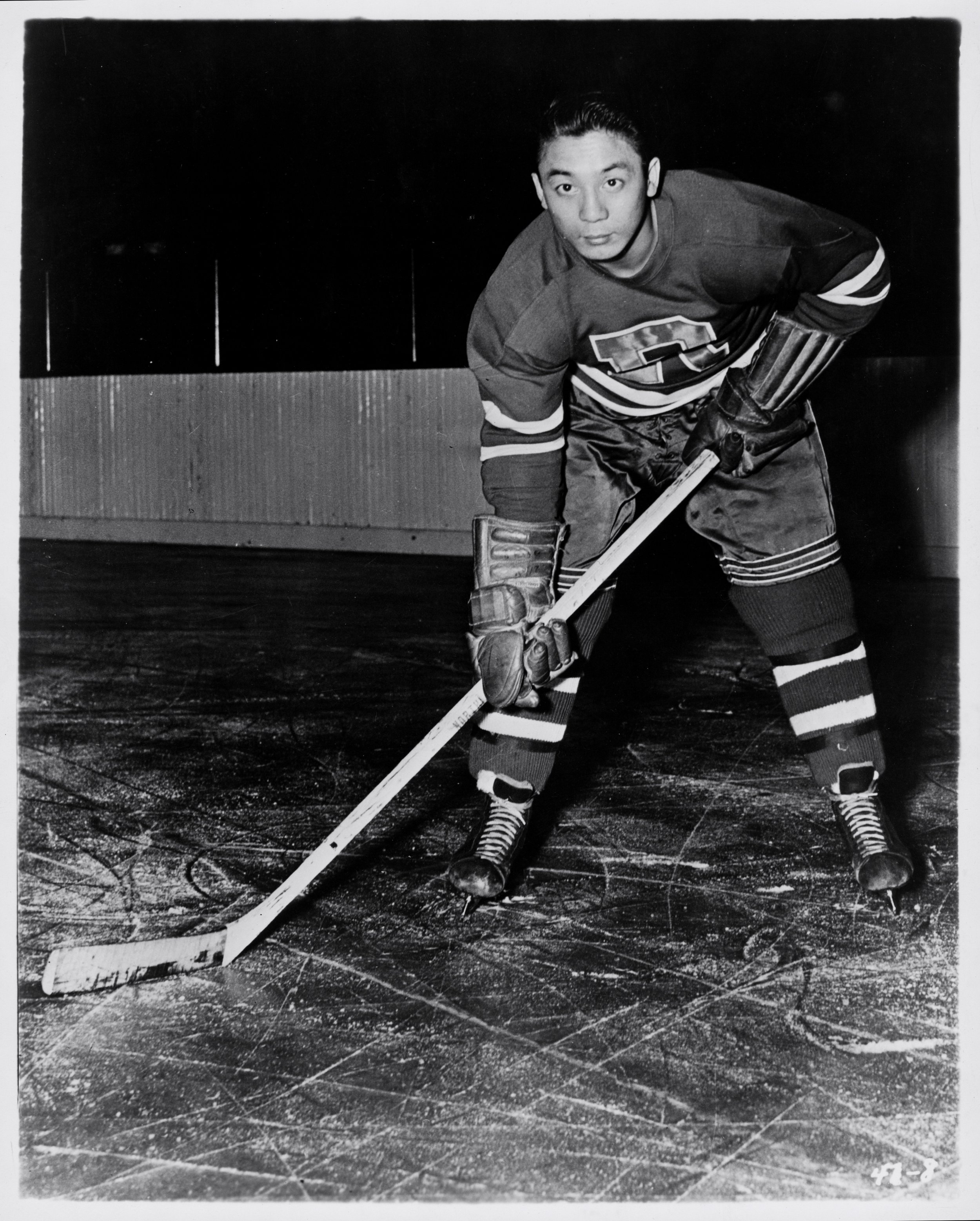‘The Longest Shot: How Larry Kwong Changed the Face of Hockey’ by Chad Soon, George Chiang & Amy Qi is now available from Orca Books and other major booksellers
INDUCT LARRY KWONG INTO THE HOCKEY
HALL OF FAME
The CampaigN
On March 13, 1948, Larry Kwong aka Eng Kai Geong, a Chinese Canadian hockey player, broke the colour barrier as the NHL’s first player of Asian descent.
Larry Kwong’s achievement went largely unacknowledged until recent grassroots campaigns emerged to share Larry’s story. Since then, there have been modest ceremonies, regional awards, and news reports recognizing Larry. He has, however, never been inducted into the Hockey Hall of Fame.
Larry Kwong was called-up by the New York Rangers for a game vs. the Montreal Canadiens on March 13, 1948. Playing a single, 60-second shift in the third period, Larry became the first player of Asian descent to play in the NHL.
The NHL has made tremendous and admirable strides in celebrating its diverse history. Over recent years, minority trailblazers such as Willie O’Ree, Herb Carnegie, and Angela James, have been inducted into the Hockey Hall of Fame, either as players or builders (those celebrated for their contributions to the development of hockey). Respectfully, it’s Larry’s turn. It’s time to celebrate the man who broke the NHL’s colour barrier.
His 60-second shift laid the foundation for all NHL hockey players of colour, especially those of Asian descent, such as Peter Ing (Chinese Canadian), Paul Kariya (Japanese Canadian), Jim Paek (Korean), Richard Park (Korean American), Robin Bawa (South Asian Canadian), and, more recently, Matt Dumba (Filipino Canadian) and Jason and Nick Robertson (Filipino American).
As Asian involvement in the sport of hockey continues to grow in North America and beyond, it’s Larry’s turn to receive the recognition he deserves. An induction will ensure that his contribution is never forgotten. It's only fitting that the long overdue induction occurs in 2024. March 13, 2023, marked the 75th anniversary of Larry’s NHL debut; June 17, 2023, was the day Larry would have turned 100. Let’s give Larry his turn before the past is forgotten. Sign the Change.org petition today (currently 11,500+ signatures)!
“No question: Larry Kwong belongs in the Hockey Hall of Fame as a Builder.”
LARRY’s Story
Larry’s older brothers Jack (2nd from left) and Charlie (opposite) face off in front of the Kwong family store in Vernon (along with two neighbourhood kids)
Larry was born on June 17, 1923, in Vernon, British Columbia. He was the son of Chinese immigrants who owned a local grocery store in Vernon. Larry was the 14th of 15 children, and his father passed away when he was five, just before the start of the Great Depression. As such, the children spent their days going to school, performing chores, and helping in the family store. Larry fell in love with hockey listening to the Toronto Maple Leafs games on the radio on Saturday evenings in the family's apartment above the store. He dreamt of one day playing in the NHL.
At the time, Chinese Canadians’ employment opportunities were severely limited, as they were barred from many professions other than hard labour; Larry wanted something different for himself, and hockey presented that opportunity. His mother, fearing he would get hurt and not believing hockey was a realistic pursuit, initially refused to let him play hockey. Larry tearfully begged his mother to let him play and promised to buy her a house if he ever made it big in hockey. While she likely did not believe it would ever happen, his mother decided to not stand in the way of her son's dream. Larry spent his youth playing hockey on outdoor ponds using $4 skates that were too big for his feet and discarded catalogs as shin guards.
His exceptional speed and skill made him a promising hockey prospect, as he won two provincial titles and jumped over both junior and intermediate hockey to earn a spot with one of Canada’s best senior teams, the Trail Smoke Eaters. Hockey was a temporary escape from the segregation surrounding Larry. While his hockey prowess was admired on the ice, he faced overt discrimination outside of the rink because of the colour of his skin, as local barbers refused to cut his hair, he was denied jobs that were traditionally offered to other junior hockey players, and he wasn’t allowed to cross the Canadian border with his teammates for games because of the U.S.’s Chinese Exclusion Act. He hid such discrimination from his mother, as he feared she would pull him out of hockey if she ever learned of the disparate treatment.
Larry playing for the New York Rovers
During World War II, at the age of 20, Larry served his country by volunteering in the Canadian army and played for his base’s hockey team. After the war, Larry’s skills on the ice were noticed by scouts for the New York Rangers, who signed him to their minor league team, the New York Rovers, in 1946. In his rookie season, he tallied 37 points in 47 games. In his second season he led the Rovers in scoring with 86 points in 65 games. He also became a fan favorite of the Rovers and Chinese Americans in particular, as Asian heroes were few and far between at the time. While other teammates were called to don the red, white, and blue of the parent team, Larry had to wait. Finally, after two seasons, Larry received the call-up to the Rangers to play against the Montreal Canadiens on March 13, 1948, at the storied Forum.
The media promoted his debut as a curiosity, referring to him as the “China Clipper,” “King Kwong,” and “Chinese Puckster.” But Larry was so much more than a novelty act. Larry’s undeniable skill was affirmed by several hockey legends, including Toe Blake, Dickie Moore, Jean Beliveau, and Herb Carnegie. Larry spent most of the game on the bench and was only put on the ice for a single, 60-second shift in the third period. He was returned to the Rovers the next day, and he was never called up to play in the NHL again. Ever the consummate professional, Larry never dwelled on the negative or portrayed himself as a victim when describing his single shift. Rather, he remarked decades later, “It’s possible that I’ve been overlooked. Who knows? I felt that I did my share for the team.”
SIGNIFICANT ACHIEVEMENTS
Larry (front, left) led the Valleyfield Braves to 1951 Quebec Senior Hockey League title and Alexander Cup
PIONEER OF BC HOCKEY
First player from Okanagan region to reach NHL
Lone BC native in NHL in 1947-48
PIONEER OF BC HOCKEY
Star player for Vernon Hydrophones – 1939 BC Midget Champions, 1941 BC Juvenile Champions
Powered Trail Smoke Eaters to 1946 Savage Cup, Senior ‘A’ championship of BC
Led Valleyfield Braves to 1951 Quebec Senior Hockey League title and Alexander Cup, major senior championship of Canada
MVP
Won Byng of Vimy Trophy as MVP of Quebec Senior Hockey League in 1950-51
QSHL First All-Star Team (1950-51)
Leading scorer for New York Rovers (1947-48), Valleyfield Braves (1951-52) and HC Ambrì-Piotta (1958-59)
Larry Kwong (left) with Hockey Hall of Fame Inductee Toe Blake (centre) and former NHLer Jimmy Orlando (right)
Scoring Machine
Led QSHL in assists (tied) in 1950-51
2nd in points 2nd in goals in QSHL in 1951-52 to Jean Béliveau; 3rd in points
Averaged better than a point per game in his 9-year QSHL career, competing against future NHL greats such as Béliveau, Dickie Moore, and Jacques Plante
2nd in goals (tied) in British National League in 1957-58
Scored 419 goals and 868 points in his senior/minor pro career (plus many more in exhibition games against the best clubs and national teams in Europe)
Hockey Ambassador
Served in Canadian forces during WWII, playing for Army team alongside and against many NHL stars (1944-45)
Scored 55 goals in 55 games for Nottingham Panthers of British League (1957- 58)
First pro from BC to play/coach in Swiss National League
Led his clubs and “Swiss Canadians” to victories against strongest clubs and national teams in Europe (e.g., Soviets, Czechs) in 1950s and ‘60s
As a coach, made major contributions to the development of Swiss hockey from 1958-68 with Ambrì-Piotta, Lugano, Lausanne, Aarau, and Neuchâtel
Larry (front, left) playing for Ambrì-Piotta in Switzerland, 1958-59 season
Champion of Diversity
First player of Asian descent to play in NHL—broke NHL’s colour barrier 10 years before Willie O’Ree
First Chinese Canadian to coach a Senior ‘A’ hockey club (HC Ambrì-Piotta)
Hall of Famer
Alberta Hockey Hall of Fame (2016)
BC Sports Hall of Fame (2013)
Okanagan Sports Hall of Fame (2011)
Testimonials
“I remember Larry Kwong very well. You could see he enjoyed playing the game. He was a very smooth player—very skilled, with a beautiful style.”
“Larry was a heck of a hockey player. He was a good skater, a good puck handler. He could score goals. What more do they want?”
“I would not trade Larry Kwong under any circumstances….I would not give up Kwong in any deal.”
“I was impressed during virtually every game with Kwong’s speed, smarts, and teamsmanship. In a way he reminded me of Hall of Famer Yvan Cournoyer, the Montreal Canadiens forward nicknamed ‘Roadrunner.”
Career Statistics
In the news
January 27, 2024: Larry Kwong: Hockey Pioneer and Global Game-Changer - Vancouver Canucks/NHL.com
May 21, 2023: The People’s Choice: Breaking The NHL’s Colour Barrier Was Only A Part of Larry Kwong’s Legacy - Sportsnet
April 3, 2023: Color of Hockey: Kwong gaining support for Hall of Fame induction - National Hockey League (NHL.com)
March 18, 2023: The hockey player who broke the NHL colour barrier 75 years ago - A Little More Conversation with Ben O'Hara-Byrne
March 14, 2023: The legacy of Larry Kwong: Why this Toronto foundation is rallying for this player's spot in the Hockey Hall of Fame - CBC Radio Metro Morning
March 14, 2023: Hockey Hall of Fame - Larry Kwong - CBC Radio Ottawa Morning
March 13, 2023: 75th Anniversary - Larry Kwong First Asian to Play in NHL - Rogers Sportsnet Monday Night Hockey
March 13, 2023: Larry Kwong broke NHL colour barrier 75 years ago - The Globe & Mail
March 13, 2023: 75 years ago, a Chinese-Canadian broke the NHL colour barrier. Do you know his name? - Global News National
March 13, 2023: Larry Kwong's 75th Anniversary - CBC Radio - The Homestretch
March 13, 2023: 75 years ago today: Vernon player makes hockey history - Vernon Morning Star
March 13, 2023: Petition to put Chinese Canadian NHL player into the Hall of Fame - CityNews
March 13, 2023: 75th Anniversary of Larry Kwong Breaking Colour Barrier - CBC Radio West with Sarah Penton
March 8, 2023: Larry Kwong overcame odds to be NHL pioneer - NHL
February 23, 2023: Larry Kwong's legacy as an NHL trailblazer - Global News BC
February 23, 2023: Larry Kwong, Canada-USA Rivalry Series and Marie-Philip Poulin's latest accomplishment, the Respect Group and the PHF Riveters - The Hockey News
January 23, 2023: Honouring Larry Kwong - NHL.com (Calgary Flames)
December 7, 2022: Federal government honours 5 NHL players for overcoming racial barriers - Yahoo! Sports
September 15, 2022: Fans push for Larry Kwong's induction to Hockey Hall of Fame, 75 years after he broke NHL's colour barrier - CBC News
September 15, 2022: 'I think it's time': Campaign to induct NHL's first Asian player into Hall of Fame - CTV News
March 21, 2018: Larry Kwong, the NHL’s first player of color, passes away at 94 - The Color of Hockey
March 18, 2018: Larry Kwong was the NHL’s first player of Asian descent - The Globe & Mail
March 18, 2018: Larry Kwong was the first person of color to play in the NHL. He was on the ice for a minute. - The Washington Post
September 2, 2014: Larry Kwong: The Man and the Minute That Changed the NHL Forever - NBC News
February 19, 2013: A Hockey Pioneer’s Moment - The New York Times
August 3, 2010: A hockey trailblazer emerges from obscurity - The Globe & Mail
August 1, 1993: Kwong recalls legends of hockey - Vernon Morning Star
March 20, 1948: ‘King’ Kwong Totes Vernon’s NHL Hopes - The Vancouver Sun
March 14, 1948: Canadiens Win 3-2 Retain Playoff Hopes - The Ottawa Journal
March 13, 1948: Chinese Player Makes Debut in National Hockey League - Edmonton Journal
March 13, 1948: B.C. Chinese With N.Y. Tonight - The Province
November 21, 1946: First Chinese Hockey Player in U.S. - Edmonton Journal
September 19, 1946: Larry Kwong Impresses Lester Patrick - Calgary Herald









